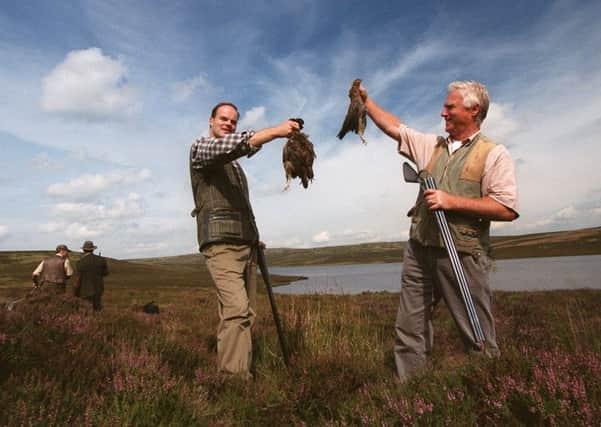Tim Baynes: Don't grouse about shooting '“ estates benefit wildlife and the economy too


Many grouse moors had to contend with difficult spring weather last year but the season remained positive in most places, with grouse numbers high enough to allow shoot days. This ensured that rural areas continued to experience social and economic benefits from domestic and international visitors coming to Scotland for our world class country sports tourism.
Even where grouse numbers were not high enough for shooting, we still saw year-round conservation work, benefiting ground nesting birds and other wildlife, all undertaken by gamekeepers and estate staff who are employed whether shooting takes place or not.
Advertisement
Hide AdAdvertisement
Hide AdThis year is particularly noteworthy for the sector with an independent review of moorland management announced last year by Cabinet Secretary Roseanna Cunningham.


The expert group that will conduct the review is in place to take forward the government’s stated core objective: “This new group will look at what we can do to balance our commitment to tackling wildlife crime with grouse moor management practices, so it continues to contribute to our rural economy, while being sustainable and compliant with the law.”
The Scottish Moorland Group, whose members make up the majority of grouse estates across the country, has already indicated its willingness to assist. It is in all our interests to have thorough and independent research to inform public policy and help lay to rest misunderstandings around grouse moor management.
Concerns about wildlife crime were a catalyst for this review. Persecution of birds of prey is unacceptable and widely condemned in the sector. Those who engage in such activity should face the consequences and Scotland has some of the most stringent legislation and penalties to deal with such cases.
There has been significant progress over the last five years, with a continued long-term decline in bird of prey crime, according to government statistics. That said, this is an ongoing issue that needs to be addressed.


We have also seen new models of partnership to close the perceived gap between moorland managers and conservation groups. The Partnership Against Wildlife Crime Scotland has aided efforts to reduce all forms of wildlife crime, whilst the East Cairngorms Moorland Partnership is leading the way for moorland estates to work together and with the Cairngorms National Park. In the Heads Up for Harriers project, the majority of estates volunteering are driven grouse moors, and 2017 has seen a bumper year with 37 chicks successfully fledging. We also have the South of Scotland Golden Eagle project, with estates volunteering to get this iconic bird re-established.
The review panel will also look at the intensity of moorland management and examine matters such as muirburn and mountain hare populations. These issues have been the focus of work at Scotland’s Moorland Forum in the last two years, resulting in new codes of best practice endorsed by the government.
Yet, we cannot look at these issues in isolation. There is a need to examine what has happened where grouse management has ceased, such as in Wales, and the detrimental impact it has had. With the conclusions of the Langholm Moor demonstration project due to be published this year, which examine the conflict between raptor populations and grouse moor management, it is important to understand that rare moorland birds such as curlew, lapwing and golden plover are increasingly reliant on the management of gamekeepers as populations decline elsewhere. The Scottish Government has recognised the need to examine the substantial contribution that grouse shooting makes to the rural economy. This is even more important on moorlands where alternative land uses are limited by climate, soil and altitude and would thus affect vital employment, paid for privately, that can be sustained. This has added importance at the time of Brexit, when other land uses, such as hill farming, may face substantial change.
Advertisement
Hide AdAdvertisement
Hide AdThe debate around grouse shooting is too polarised. However, those willing to work constructively and collaboratively do achieve results, particularly in the conservation of species and habitat. Those of us who are passionate about shooting, and the multitude of benefits it provides, hope that cooperation and partnership will prevail and help build on what is a Scottish rural success story.
Tim Baynes, director of the Scottish Moorland Group.